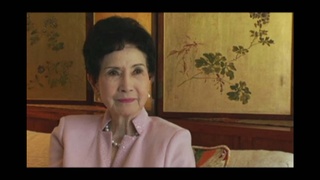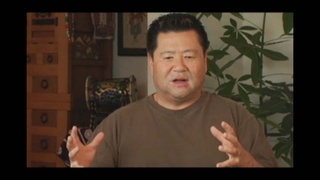Interviews
Understanding Sansei taiko (Japanese)
(Japanese) As I remember, when we were kids in Japan it was sort of expected to follow certain ways, you know-following the tradition, to dress in kimono or happi-coat. But over here, folks don’t seem to care that much about tradition. They do it in their own style, don’t you think? Being different from the way they’re done in Japan, it used to seem kind of odd to me but now that I’ve gotten used to it and now it looks ok in their own way. I feel why should we get so sticky about the form. Japanese art, I think, is too concerned about the form anyway.
So, as Sansei groups begin to perform traditional Japanese art that tends to expand the scope of these traditional art forms. That’s why when the Kinnara group began performing. I used to criticize them about the form but now... Johnny Mori has all the essentials in place and I think he is really cool now. He wears the happi-coat in the right form, you know.
Date: January 27, 2005
Location: California, US
Interviewer: Art Hansen, Sojin Kim
Contributed by: Watase Media Arts Center, Japanese American National Museum.
Explore More Videos

Taiko is a reflection of where you live
Senshin Buddhist Temple minister and co-founder of Kinnara Taiko.

Playing traditional gagaku while creating an identity
Senshin Buddhist Temple minister and co-founder of Kinnara Taiko.

Taiko as self-expression
Co-founder and creative director of San Jose Taiko

A “principally-based” taiko group in England creating a global taiko community
Co-founder and creative director of San Jose Taiko

Defining a Taiko player
(b.1951) Co-founder and managing director of San Jose Taiko.

Easier to be a foreigner in Japan (Spanish)
(b. 1969) Former president of Centro Nikkei Argentino.

The various realities of Nikkei in Latin America (Spanish)
(b. 1950) Nisei Chilean, Businessman


Growing up with Japanese language and values
(1925 - 2018) Nisei educator from Hawai‘i

The political effects on Nikkei during the war (Spanish)
(b. 1950) Nisei Chilean, Businessman

To be more Japanese than you really are (Spanish)
(b. 1950) Nisei Chilean, Businessman

Japanese American taiko is not Japanese taiko
(b. 1949) Musician and arts educator and adminstrator.

Parents didn't accept me playing taiko in the beginning
(b. 1949) Musician and arts educator and adminstrator.

The importance of learning cultural diversity (Spanish)
Sansei Argentinean

